AMAZING INSECTS ON A COLD DECEMBER DAY
These days are fairly cold. The temperatures are around seven to ten degree Celsius. People wear coats and jackets, so I didn't expect to find something that will make me pull the macro lens out of the small plastic box in which the thing was stored, I thought, until springtime.
While passing by the tangerine tree in my yard, I noticed some moving little dots on the leaves. When I got closer, I found out that some insects are active in the chill December atmosphere. It was time to prepare the macro lens and take a better look at what's going on there, on that small tree that produces plenty of tasty fruits in autumn.
The first creatures I saw, were nymphs. Young, not completely developed versions ...

... of the Issus coleoptratus planthopper. I encountered a bunch of adults in the summer, and now I had the opportunity to photograph the nymphs. These juveniles have a more interesting and extravagant appearance than adults. The tuft of filaments that looks like a tail, is definitively a cool little detail. The nymphs I encountered yesterday were at different stages of their life. The one shown in the above photograph was relatively big, just slightly smaller than an adult. In the following picture ...
... you can see a considerably smaller one.
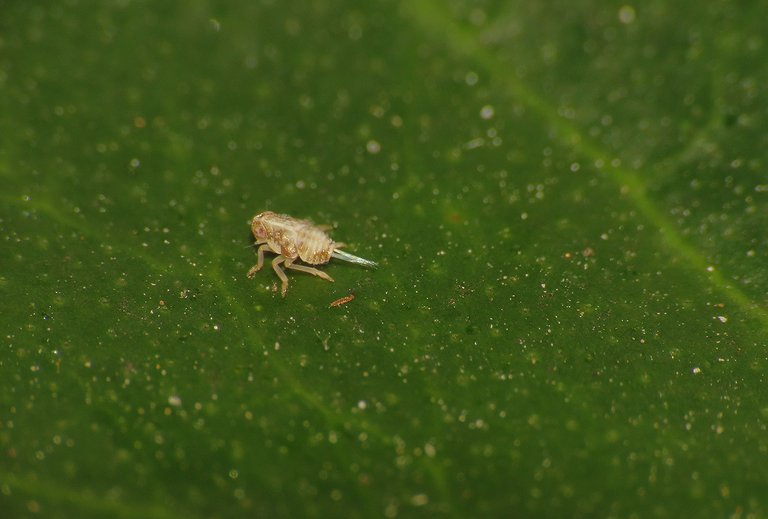
This one was very small, and the shape was slightly different.
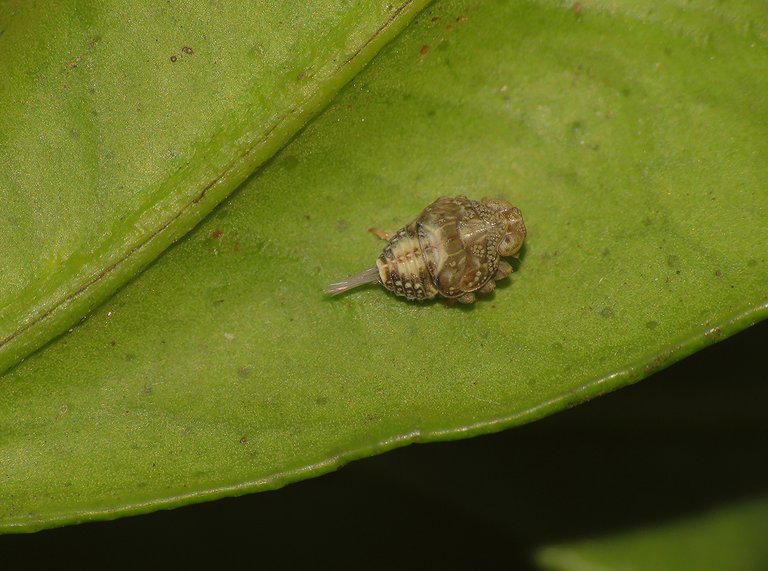
While exploring the Internet in search of information to use in this post, I found out that the nymphs of this species overwinter hidden on the foliage of various shrubs and trees.
On one of the neighboring leaves, very close to the planthopper nymphs, I found this minuscule midge with beautiful, iridescent wings. Can't tell you the name of the species or anything else about this insect that I never saw before. All the similar midges I encountered through the years of observing stuff through the macro lens had transparent wings with just a slight iridescence in some cases.
The most amazing of all yesterday's findings is this beetle.

It's a ladybeetle and is completely new to me.
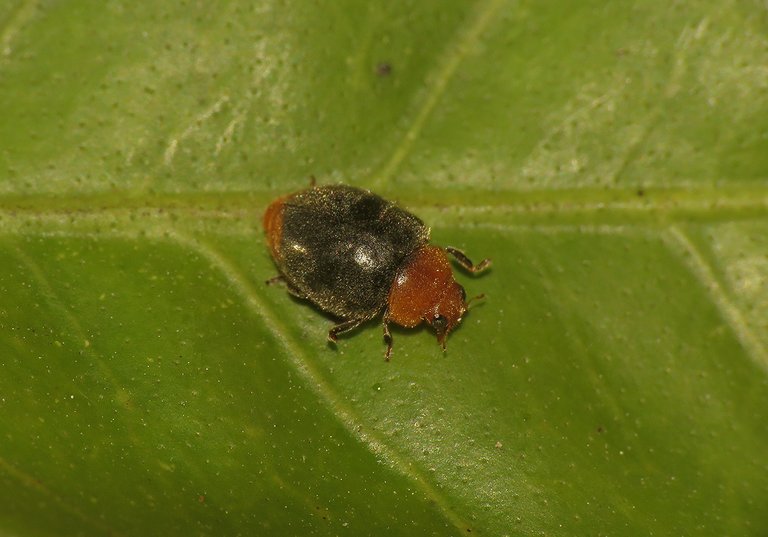
After a quick Internet search, I found out that this is the Cryptolaemus montrouzieri, a species from the Coccinellidae family. This ladybeetle, commonly known as the mealybug ladybird or mealybug destroyer is native to Australia, and until the seventies, when was introduced in many other parts of the world including central and southern Europe, it was endemic to Queensland and New South Wales.
The adults and larvae eat various scale insects, especially mealybugs. That carnivorous diet makes them very useful as natural pest control.
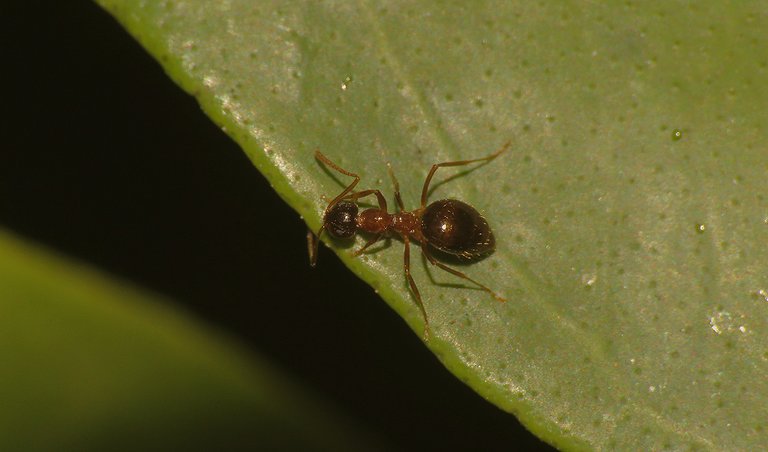
The ants were also crawling on the leaves and branches. I don't remember seeing this type of ant in the summer, here on the tangerine tree. Can't tell you the name of the species.
In this photograph, you can see another ant of the same kind near the edge of the leaf and a line of wax scale insects along the central vein.
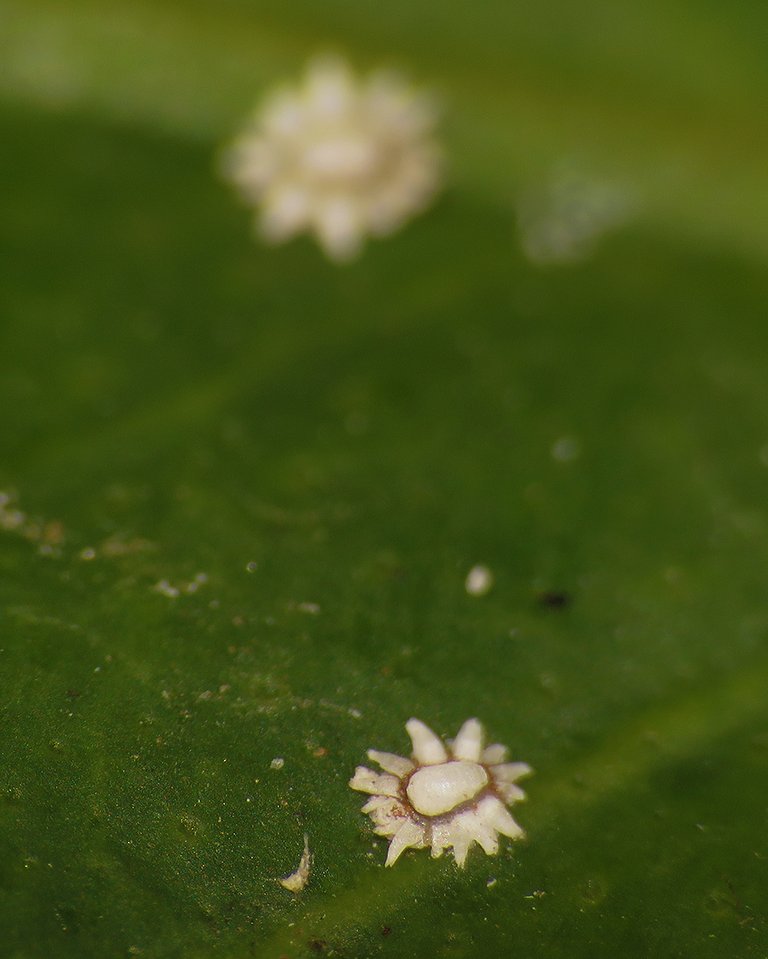
Including the scale insects in this post was inevitable, but describing them as an amazing, exceptional encounter would feel like cheating because they are present on the foliage all year round.
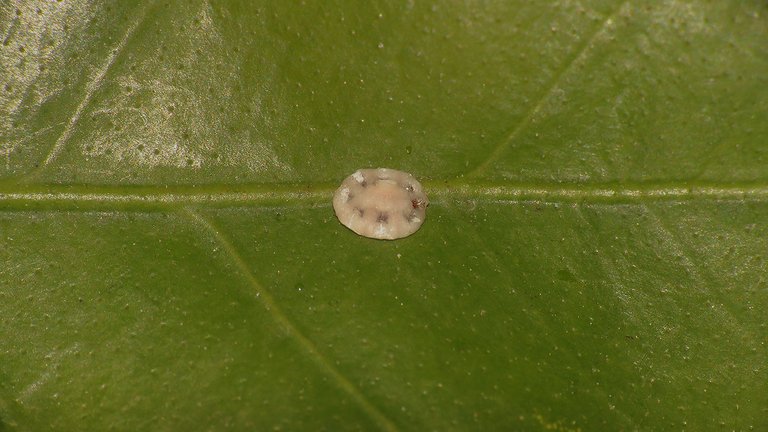
This is the Ceroplastes japonicus, a wax scale from the Coccidae family.
The adult females are completely immobile with no recognizable features that one associates with insects. You can't see any legs or traces of the segmented body. The animal looks like some kind of limpet attached to the leaf.
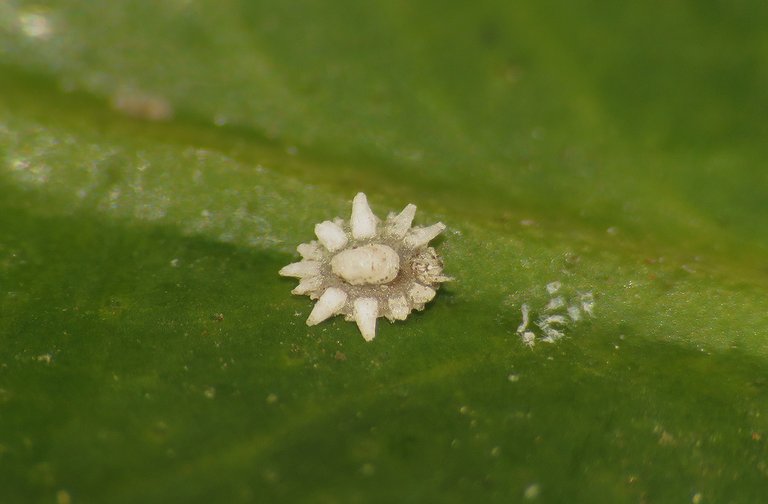
Here you can see a much smaller nymph. At this stage, the wax scales can move and slowly spread to new territories. Nymphs look a bit more like insects, but most of their anatomy is hidden under the waxy shell that looks like a little star. Or some kind of natural shuriken, I'll say.
As you can guess by its scientific name, this interesting little pest is native to Eastern Asia.
Here you can see another predator. Another little scale insect destroyer. I can't tell you the name of the species, but I know the family. The family is Coniopterygidae in the order Neuroptera. Coniopterygidae are commonly known as dustywings or waxwinged lacewings. This was my first encounter with one of them. The dusty appearance is caused by a white waxy substance produced by the insect.
Their mouthparts consist of short, straight sucking tubes covered by the labrum which can be described as an insect equivalent of the upper lip. All the Coniopterygidae are crepuscular and can be usually found on shrubs and trees, where they feed on small invertebrates like scale insects, aphids, and mites, as well as on eggs of these and various other small arthropods. The mouth tubes are used for sucking fluids from the prey.
The dustywing shown in this set of photographs was eating the remains of an already partially eaten Ceroplastes japonicus nymph. Taking these shots was very exciting because I have never observed this situation before. In the following photograph ...
... you can see the Lonchoptera lutea, a small fly from the Lonchopteridae family.
This very small iridescent wasp from the Eulophidae family is the last insect I encountered yesterday on the leaves of my tangerine tree. Can't tell you the name of the species because with many similar-looking little wasps from that large family present in Europe that's hard to tell, but ...
... but since most Eulophidae in their larval stage are parasitoids on a huge range of arthropods at all stages of development, I'm inclined to think that this shiny little thing is beneficial to the tree.
The following links will take you to the sites with more information about some of the protagonists of this post. I found some stuff about them there.
https://www.britishbugs.org.uk/homoptera/Issidae/Issus_coleoptratus.html
https://en.wikipedia.org/wiki/Cryptolaemus_montrouzieri
https://wiki.bugwood.org/Ceroplastes_japonicus
https://en.wikipedia.org/wiki/Coniopterygidae
https://en.wikipedia.org/wiki/Lonchoptera_lutea
https://en.wikipedia.org/wiki/Eulophidae
AND THAT'S IT. AS ALWAYS IN THESE POSTS ON HIVE, THE PHOTOGRAPHS ARE MY WORK - THE END.
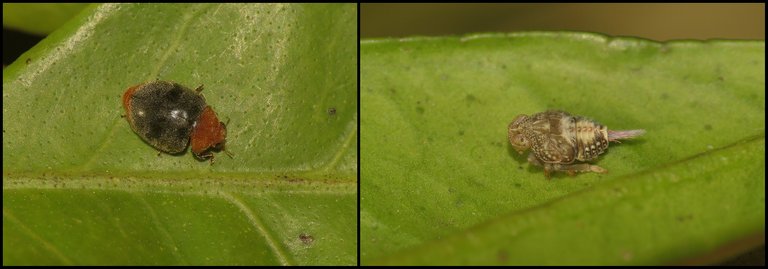
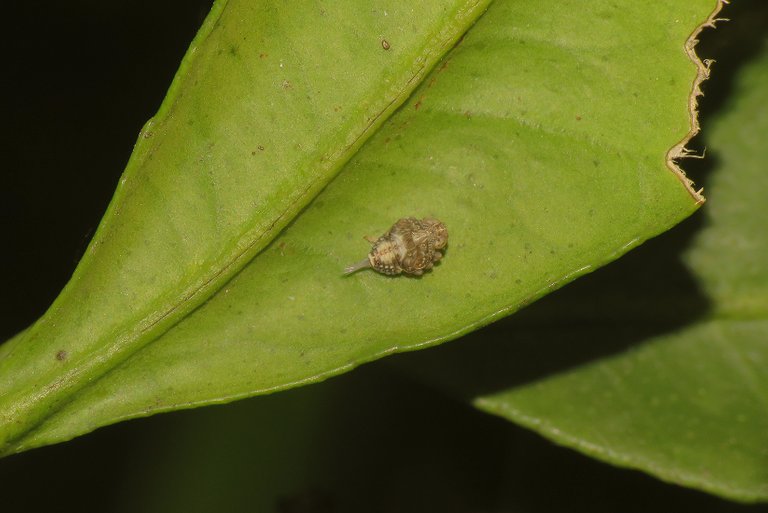
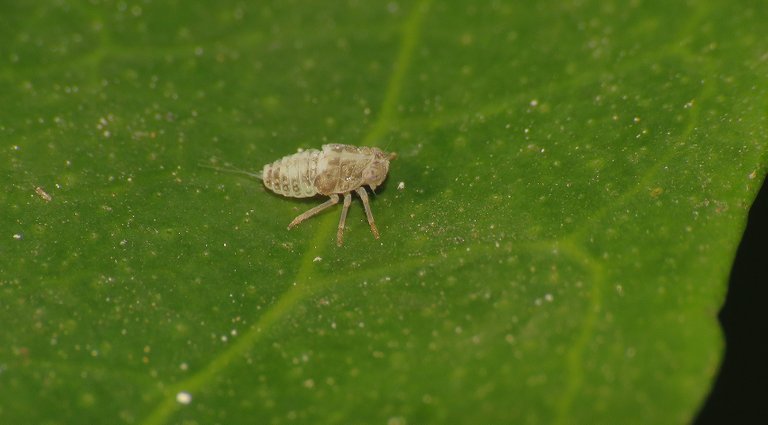

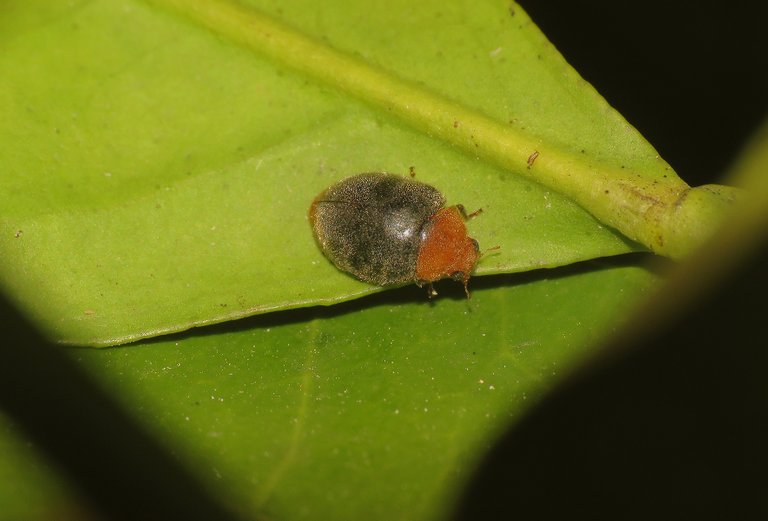
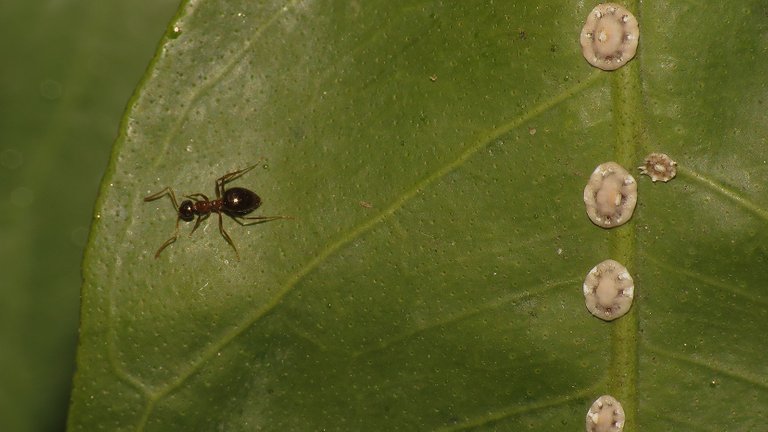

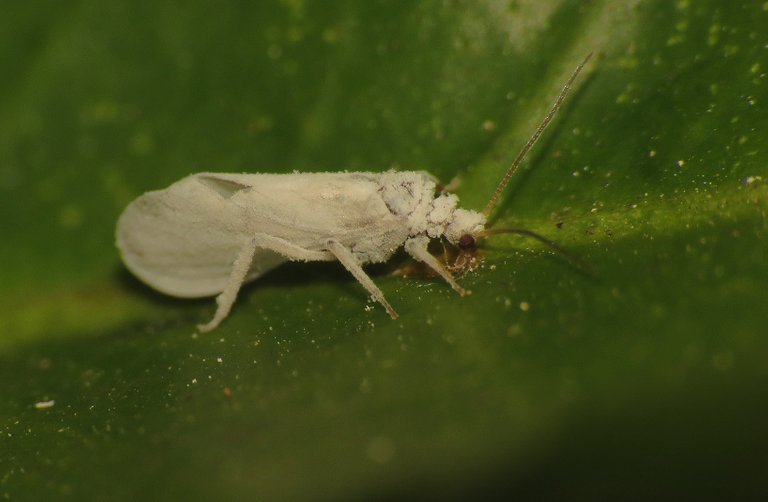



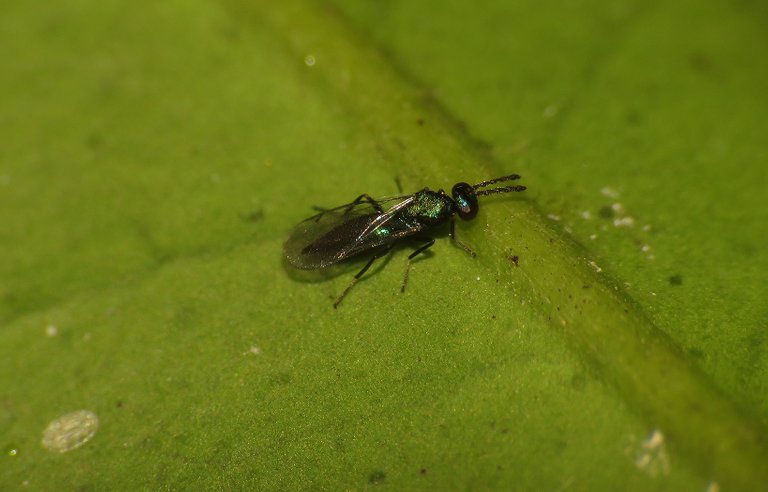
wow...amazing photo. I like it, one of the insects I think is very unique and we don't often find it. has a tail like the axis of an alien ship. good luck bro
👏👏Excellent photos friend, congratulations and greetings 🙋🙋
I love that 1st nymph close up, it almost looks cute up close 😁
😀
Those wings are gorgeous on "this minuscule midge with beautiful, iridescent wings".
https://twitter.com/1148509694492905473/status/1601158815373672449
The rewards earned on this comment will go directly to the people( @lxsxl ) sharing the post on Twitter as long as they are registered with @poshtoken. Sign up at https://hiveposh.com.
Insects in winter is not very common to happen, this is a surprising find dear friend @borjan
What beautiful varieties of insects you have discovered on this occasion. Congratulations, I appreciate all the information.
enjoy the weekend
Thank you. 🙂
Wow!... ¡What a shot @borjan friend!... Great post!
Incredible to see your macro shoots @borjan !! is crazy to see the magnitude of the insect world, and how some dont even pay attention to them
yes, there is a great diversity hidden in small things.
So cool that you still found some insects with the colder temperatures.
Love the looks of the nymph 😎😊 soooo alien looking.
Never seen them before.
Thank you for sharing them with us @borjan 👋🏻😊 happy weekend!